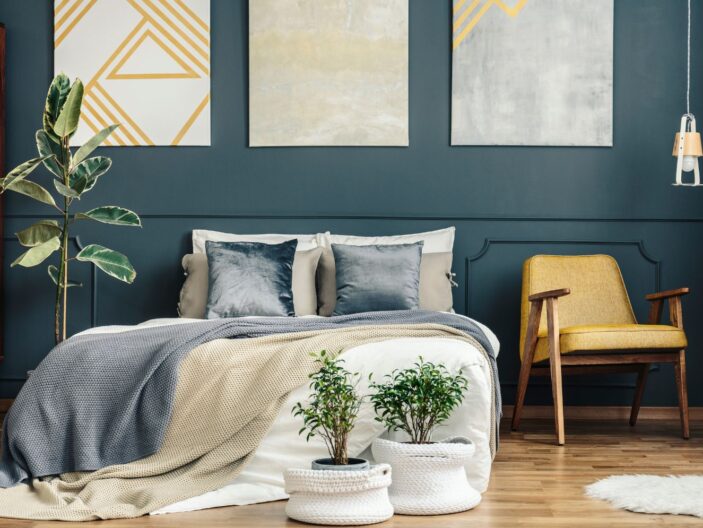Are you tired of living in a dull and drab bedroom? Do you want to transform your bedroom into a cozy and inviting space? Look no further, as this article will reveal the best color for your bedroom that will instantly elevate its ambiance and create a sense of comfort and tranquility.
Explore: Best Bedroom Table Lamp
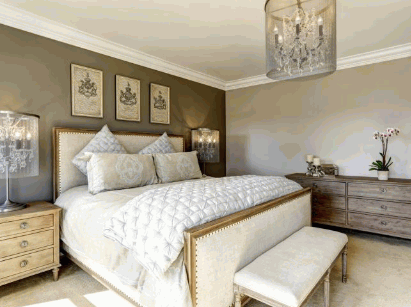
Why Is Choosing The Right Color For Your Bedroom Important?
Selecting the perfect color for your bedroom is vital in creating a space that encourages relaxation, peaceful sleep, and overall well-being. The color of your bedroom can greatly impact your mood, energy levels, and even your ability to fall asleep. For instance, calming colors such as blue and green are known to induce a sense of tranquility and relaxation, while vibrant colors like red and orange can increase energy and excitement. It is essential to consider your personal preferences, as well as the psychological effects that different colors can have on your mind and body when choosing the ideal color for your bedroom.
Factors To Consider When Choosing A Color For Your Bedroom
When it comes to choosing the perfect color for your bedroom, there are several factors to consider. Your personal preference, the size of your room and the lighting, the desired mood and atmosphere, and the use of complementary colors all play a role in the decision-making process. In this section, we will discuss each of these factors and how they can guide your choice of color for a peaceful and comfortable bedroom space.
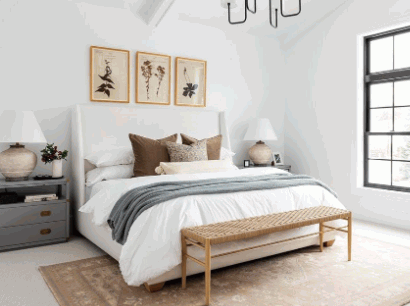
1. Personal Preference
When it comes to choosing the perfect color for your bedroom, your personal preference should be a top priority. Here are some steps to help guide you:
- Consider your favorite colors and how they make you feel.
- Think about the mood and atmosphere you want to create in your bedroom.
- Take into account any color associations or symbolism that resonate with you.
- Consider the color’s impact on the overall aesthetic of the room.
In the end, the best color for your bedroom is one that reflects your personal style and brings you a sense of comfort and relaxation.
2. Room Size And Lighting
When deciding on a color for your bedroom, it’s crucial to take into account the size of the room and the lighting conditions. Here are some important factors to keep in mind:
- Room size: Lighter hues such as pastels and neutrals can give the illusion of a larger space in a small room, while darker colors can create a cozy atmosphere in a larger room.
- Lighting: Natural light can enhance the colors in your bedroom, so it’s essential to consider the direction and intensity of light when selecting a color. Rooms with limited natural light may benefit from lighter shades.
- Contrast: Keep in mind the colors of your furniture and decor when choosing a wall color. Opt for complementary colors that create a visually pleasing contrast.
- Personal preference: Ultimately, choose a color that you adore and that reflects your personal style and taste.
3. Mood And Atmosphere
Creating the right mood and atmosphere in your bedroom is crucial for a restful and relaxing space. Here are some steps to consider:
- Assess your desired mood: Determine the ambiance you want to create, such as a calm and serene or cozy and intimate atmosphere.
- Choose suitable colors: Certain colors, like blues and greens, promote relaxation, while warm tones, like yellows and oranges, can create a cozy atmosphere.
- Consider lighting: Lighting plays a significant role in setting the mood. Soft, warm lighting can enhance a cozy atmosphere, while bright, cool lighting can create a more energetic vibe.
- Combine colors strategically: Use complementary colors to create balance and harmony in the room.
4. Complementary Colors
Complementary colors are pairs of colors that are opposite each other on the color wheel. They can create a dynamic and vibrant effect when used together in a room. When choosing a color scheme for your bedroom, it’s important to consider complementary colors as they can add visual interest and balance.
For instance, if your bedroom is primarily blue, you can incorporate accents and accessories in orange tones to create a complementary color scheme. This combination will provide a striking contrast and add depth to the overall design.
Remember to take into account personal preference, room size, lighting, and the desired mood and atmosphere when selecting complementary colors for your bedroom.
What Are The Best Colors For A Bedroom?
When it comes to choosing a color for your bedroom, it’s important to consider the overall mood and atmosphere you want to create. Different colors can evoke different emotions and have varying effects on our mental state. In this section, we will explore the best colors for a bedroom and the specific qualities that make them ideal for creating a peaceful and relaxing space. From calming colors to warm, cool, and neutral tones, we’ll discuss the benefits and considerations of each color palette.
1. Calming Colors
Creating a peaceful and relaxing atmosphere in your bedroom can be achieved by using calming colors. To help you choose the best one, follow these steps:
- Consider the purpose of the room: Determine if your bedroom will mainly serve as a place for rest and relaxation or if you also need it to function as a workspace.
- Test out samples: Paint small sections of your walls with different calming colors to see how they look in various lighting conditions.
- Use color psychology: Research the psychological effects of different colors and choose a calming color that aligns with the desired mood.
- Consult a professional: Seek advice from an interior designer or color consultant to assist you in selecting the best calming color for your bedroom.
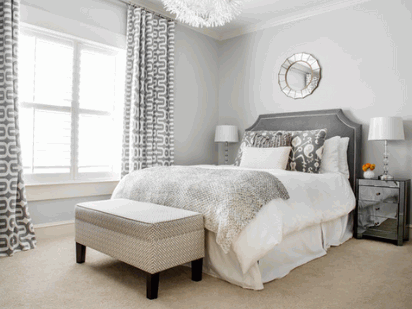
2. Warm Colors
The use of warm colors, such as red, orange, and yellow, can help create a cozy and inviting atmosphere in your bedroom. These colors are known to have a stimulating effect and can evoke feelings of energy and happiness. When deciding on warm colors for your bedroom, it is important to consider the size and lighting of the room. For smaller rooms with limited natural light, lighter warm tones like peach or coral can work well. In larger rooms, deeper warm shades like burgundy or terracotta can be used. It is also important to balance warm colors with neutral tones to achieve a harmonious and well-rounded look. Adding warm colors through bedding, curtains, and accessories can also bring a vibrant touch to your bedroom decor.
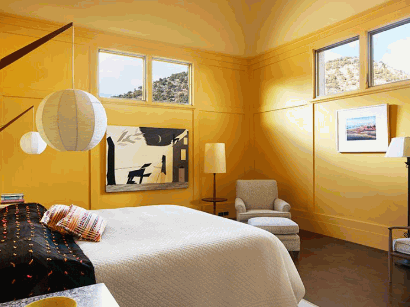
3. Cool Colors
Cool colors can create a tranquil and calming atmosphere in your bedroom. Here are steps to help you choose the best cool color for your space:
- Consider the shade: Cool colors, ranging from pale blues to soft greens and lavender hues, can evoke a sense of peace and relaxation. Choose a shade that aligns with your personal preferences.
- Assess room size and lighting: Lighter cool colors can make a smaller room feel more spacious, while darker cool colors can add depth to a larger room.
- Set the mood: Cool colors have a soothing effect, making them perfect for creating a peaceful and serene atmosphere in your bedroom. Consider the mood you want to cultivate and choose a cool color that resonates with it.
- Explore complementary colors: To add visual interest and balance to your space, consider pairing cool colors with complementary hues such as warm neutrals or pops of contrasting colors.
Remember to test out color samples, consult color psychology, and seek professional advice to ensure you choose the best cool color for your bedroom.
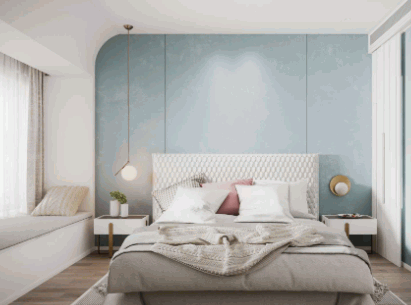
4. Neutral Colors
Neutral colors have become a popular choice for bedroom decor due to their versatility and calming effect. These serene hues create a soothing environment, promoting relaxation and better sleep. Some commonly used neutral colors include beige, gray, white, and taupe, which can easily be paired with other hues and are suitable for any room size and lighting condition.
Additionally, neutral colors provide a blank canvas for adding pops of color through accent pieces like pillows or artwork, allowing for a timeless and elegant look that can be updated with different accessories.
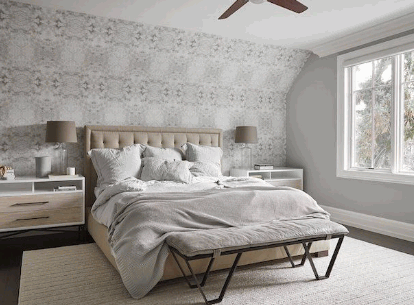
How To Choose The Best Color For Your Bedroom
Your bedroom is a place where you should feel relaxed, comfortable, and at peace. The color of your bedroom plays a significant role in creating this desired atmosphere. However, with so many color options available, it can be challenging to choose the best one. In this section, we will discuss different factors to consider when choosing a color for your bedroom. From the purpose of the room to color psychology, we’ll provide tips and insights to help you make the best decision.
1. Consider The Purpose Of The Room
When selecting a color for your bedroom, it is essential to take into account the room’s purpose. Here are some steps to guide you in making this decision:
- Identify the primary function of the bedroom. Is it primarily for relaxation, sleep, work, or a combination of activities?
- Consider the desired mood and atmosphere. Do you prefer a calm and tranquil space, or something more vibrant and energizing?
- Think about your personal preferences and the colors that bring you joy and comfort.
- Take into account the size and lighting of the room. Lighter colors can create an illusion of a larger space, while darker colors can provide a cozy and intimate feel.
By considering the purpose of the room, you can select a color that aligns with your needs and goals for your bedroom.
2. Test Out Samples
When choosing a color for your bedroom, it’s important to follow these steps to ensure you make the right choice:
- Get paint samples of the colors you’re considering.
- Apply the samples to different walls in your bedroom.
- Observe the samples at different times of the day to see how they look under different lighting conditions.
- Consider how the colors make you feel and if they create the desired atmosphere.
3. Use Color Psychology
Using color psychology in your bedroom can have a significant impact on your mood and emotions. Here are some steps to effectively use color psychology in your bedroom:
- Understand the meaning of colors: Different colors evoke different emotions and have specific psychological effects.
- Identify your desired mood: Determine the mood or atmosphere you want to create in your bedroom, such as calmness, warmth, or energy.
- Select the appropriate colors: Choose colors that align with your desired mood. For example, use blues and greens for a calming effect or warm tones like reds and oranges for a cozy feel.
- Consider your personal preferences: While color psychology can guide your choices, it’s essential to choose colors that resonate with you personally.
Color psychology has been used for centuries in various cultures. For instance, ancient Egyptians believed that certain colors had healing properties, while Chinese practitioners of feng shui used color to create harmony and balance in living spaces. Today, color psychology continues to be a valuable tool in interior design, allowing individuals to create spaces that enhance their well-being and overall experience.
4. Consult A Professional
Consulting a professional when choosing the color for your bedroom can provide valuable guidance and expertise. Here are some steps to follow when seeking professional advice:
- Research and find reputable interior designers or color consultants.
- Schedule consultations to discuss your preferences and goals for the bedroom.
- Share inspirational images or samples of colors you like.
- Listen to their recommendations based on your style, room size, lighting, and desired atmosphere.
- Consider their expertise in color psychology and how different colors can affect mood and sleep.
- Ask for samples or visualizations to help visualize the proposed color scheme.
- Discuss any concerns or questions you may have about the chosen colors.
- Review their portfolio and client testimonials to ensure their expertise aligns with your vision.
- Agree on a timeline, budget, and payment terms before proceeding with the project.
Tips For Decorating With Color In Your Bedroom
When it comes to decorating your bedroom, color plays a crucial role in setting the mood and creating a cohesive aesthetic. In this section, we will discuss some helpful tips for using color in your bedroom decor. From incorporating color accents to creating a color scheme, we’ll cover all the essential elements of using color in your bedroom. So, let’s dive in and discover how you can transform your bedroom with the right colors.
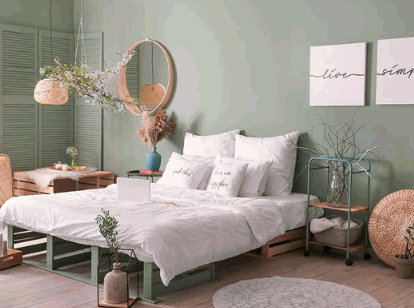
1. Use Color Accents
Adding color accents to your bedroom can bring personality and visual interest to the room. Follow these steps to effectively incorporate color accents into your bedroom decor:
- Choose a color scheme: Start by selecting a main color for your bedroom, then choose a complementary accent color.
- Select accent pieces: Incorporate the accent color through accent pillows, throws, rugs, or curtains.
- Create focal points: Make a statement by using the accent color on a piece of furniture or artwork.
- Balance with neutrals: Pair the accent color with neutral tones for a balanced and cohesive look.
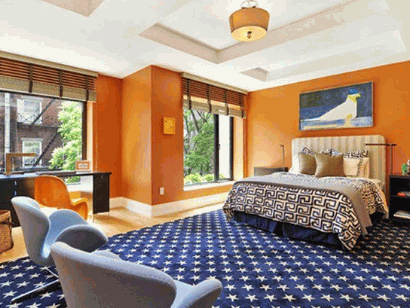
2. Create A Color Scheme
Creating a color scheme for your bedroom is essential for achieving a cohesive and harmonious look. Follow these steps to create the perfect color scheme:
- Start with a focal point color: Choose one color that will be the main focus of the room.
- Choose complementary colors: Select colors that are opposite on the color wheel to create balance and contrast.
- Consider analogous colors: These are colors that are next to each other on the color wheel and create a harmonious and calming effect.
- Decide on a color ratio: Determine the proportion of each color in the room, whether you want one color to dominate or have an even distribution.
- Experiment with shades and tones: Use different shades and tones of the chosen colors to add depth and interest.
Pro-tip: Don’t be afraid to play with different color combinations and test out samples before making a final decision.
3. Use Different Shades Of The Same Color
Using various shades of one color in your bedroom can create a cohesive and visually appealing look. Here are the steps to achieve this:
- Choose a base color that you love and want to use as the main color in your room.
- Select lighter and darker shades of the same color to create depth and dimension.
- Use the lighter shades to paint the walls, creating a soft and airy feel.
- Add in the darker shades through accent pieces such as curtains, bedding, or furniture.
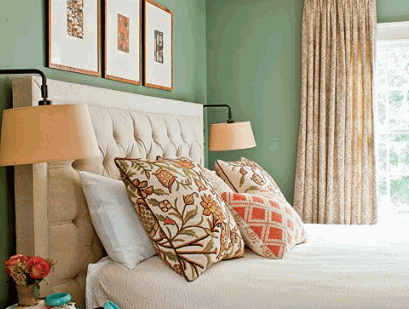
4. Balance Bold Colors With Neutral Tones
When selecting colors for your bedroom, it is crucial to find a balance between bold colors and neutral tones in order to achieve a harmonious and visually appealing space.
- Begin with a neutral base: Utilize neutral colors such as white, beige, or gray for the walls and larger pieces of furniture.
- Incorporate pops of bold color: Introduce bold colors through accessories such as pillows, curtains, or artwork.
- Try color blocking: Paint one wall or a specific area in a bold color to create a focal point without overwhelming the room.
- Consider the contrast: Pair bold colors with neutral tones to create a contrast and sense of balance in the space.
